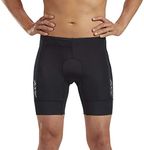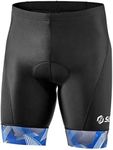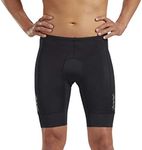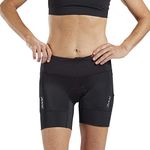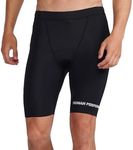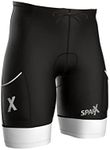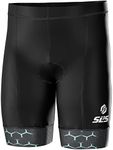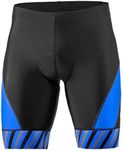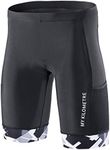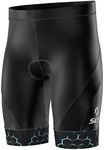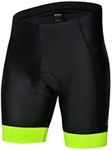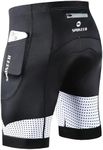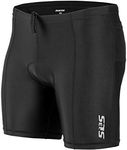Buying Guide for the Best Tri Shorts
When it comes to choosing the right tri-shorts, it's important to consider several key factors to ensure you get the best fit for your needs. Tri-shorts are a crucial piece of gear for triathletes, providing comfort and performance across swimming, cycling, and running. The right pair can make a significant difference in your overall experience and performance. Here are the key specifications to consider when selecting tri-shorts and how to navigate them to find the best fit for you.MaterialThe material of tri-shorts is important because it affects comfort, durability, and performance. Most tri-shorts are made from a blend of synthetic fabrics like nylon, polyester, and spandex. These materials are chosen for their moisture-wicking properties, stretchability, and quick-drying capabilities. When choosing tri-shorts, look for materials that offer a good balance of compression and flexibility. If you prioritize comfort during long races, opt for softer, more breathable fabrics. For those who need more support, look for materials with higher compression.
Chamois PaddingChamois padding is the cushioning in the seat area of the tri-shorts, providing comfort during the cycling portion of a triathlon. The thickness and type of padding can vary. Thicker padding offers more comfort for longer rides but may be less comfortable for running. Thinner padding is less intrusive during the run but may not provide as much comfort on the bike. Consider your primary discomfort points and the length of your races when choosing the right level of padding.
FitThe fit of tri-shorts is crucial for comfort and performance. A good fit should be snug but not too tight, allowing for a full range of motion without causing chafing. Tri-shorts come in various lengths, from short to long. Shorter lengths may be more comfortable for running, while longer lengths can provide more coverage and support during cycling. Try on different sizes and lengths to see what feels best for your body type and the specific demands of your races.
Leg GrippersLeg grippers are the bands at the bottom of the shorts' legs that help keep them in place. They prevent the shorts from riding up during activities. Good leg grippers should be comfortable and effective without being too tight. Silicone grippers are common and provide a secure fit. If you find that leg grippers are too tight or cause discomfort, look for tri-shorts with wider or softer grippers.
PocketsPockets in tri-shorts can be very useful for carrying nutrition, keys, or other small items during a race. The number, size, and placement of pockets can vary. Some tri-shorts have side pockets, while others have rear pockets. Consider what you need to carry and how accessible you need those items to be during your race. If you prefer to carry minimal items, fewer or smaller pockets may be sufficient. For longer races where you need more nutrition, look for tri-shorts with larger or multiple pockets.
Seam ConstructionThe construction of the seams in tri-shorts can affect both comfort and durability. Flatlock seams are common in high-quality tri-shorts because they lie flat against the skin, reducing the risk of chafing. Look for tri-shorts with minimal seams in high-friction areas to enhance comfort. If you have sensitive skin or are prone to chafing, prioritize tri-shorts with flatlock seams or seamless construction.
